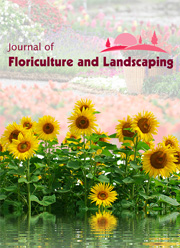Antibacterial effect of Artemisia and ginger extracts in controlling Agrobacterium tumefaciens in roses
DOI:
https://doi.org/10.25081/jfcls.2021.v7.6386Keywords:
Roses, crown gall, Artemisia, Ginger, Agrobacterium tumefaciensAbstract
Rose is the world’s most traded cut flowers with 74 % being produced in Kenya. Pests like spider mites, caterpillar, aphids, thrips, nematodes and diseases such as crown gall, downy mildew, powdery mildew and botrytis highly compromise rose production. Crown gall disease caused by Agrobacterium tumefaciens is the most problematic disease of roses in Kenya, causing a production loss of up to 60 % depending on the age and variety of rose. An experiment to determine the antibacterial effect of Artemisia and ginger extracts was carried out in vitro, where the inhibitory zones around filter discs soaked with extracts on Muller Hinton agar was established. The extracts were emulsified with dimethylsulfoxide (50 %) and minimum inhibitory concentrations of Artemisia (125 mg/ml), ginger (62.5 mg/ml) and mixture of Artemisia and ginger (31.25 mg/ml) were used to soak the filter discs whereas the commercial recommended rate of copper hydroxide of 6.25 mg/ml was used. Artemisia and copper hydroxide (commercial antibiotic) had highest inhibition zone of 12.80 mm compared to ginger 10.60 mm. A mixture of Artemisia and Ginger had a slightly lower inhibition zone (10.20 mm) though not significantly different from ginger (P> 0.001). An eight-month greenhouse experiment was also done to determine the efficacy of the extracts on inoculated rose plants. The results showed that crown gall incidence and gall weight were low but not significantly different from copper hydroxide and Artemisia. Crop vigor, which was indicated by stem length was highest for Artemisia treatment with an average of 73.54 cm followed by copper hydroxide (67.25 cm) while ginger and mixture of ginger and Artemisia had 53.44 cm and 64.70 cm respectively. From the results of this research, Artemisia and Ginger extracts are promising alternative to control crown gall and possibly other diseases in field crops. Artemisia performance compares well with copper hydroxide and therefore the best alternative to replace copper hydroxide.



 .
.